Mandy Moore's Blog, page 59
December 2, 2014
Jillian’s Spinning: Sheepspot Organic Polwarth
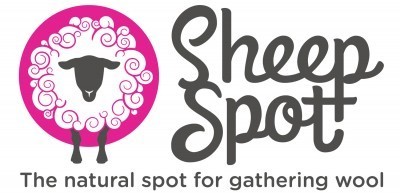
While Sasha Torres was doing the SpinDoctor podcast she fell in love with sheep, all of the breeds. Not just, “Wow, there are so many breeds, I want to sample them all” but “I want to change my life and vocation to make sure that all of this amazing variety and beauty are preserved”.
So like Deb Robson, Beth Smith, Clara Parkes, Jill Draper, Sincere Sheep and Solstice Yarns and Spirit Trail Fiberworks, Sasha speaks for the sheep, one single breed at a time. Sheepspot is about single breeds locally raised, spun to Sasha’s specifications at small mills and dyed by Sasha. Locally being defined as mostly North America, there’s is a lot of goodness in our continent!
Sheepspot is mostly about yarn, but she does have some gorgeous Organic Polwarth top. Her Polwarth was raised on two certified organic family farms in the Falkland Islands and processed in the UK. The cost is $23 for 3.7 ounces . She sent me two colors to take for a spin.
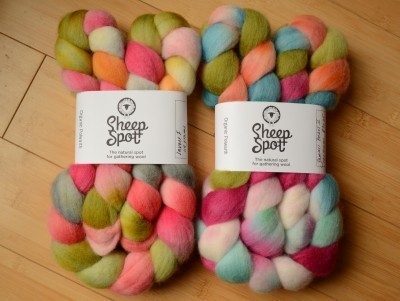
Invert, left and Gummi Bears II, right.
The fiber was treated gently. There were no compacted spots, even the ends were open. I unbraided it and shook it hard in segments and it puffed right back up to it Polwarthian glory. Sasha doesn’t use vinegar to set her dye, the fiber has zero smell.
The dyes are bright and clear. Her style of style of dyeing is with a regular patterns, as you can see from the photos. The color saturates the the fiber in most spots,but there are places with overlap and places where undyed fiber peeks through, this give a nice visual texture to the fiber and depth to the spun yarn.
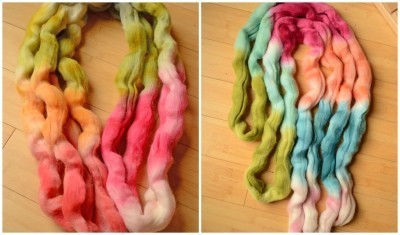
Invert, left and Gummi Bears, right
This is some of the most well behaved Polwarth that I have spun. Since it wasn’t compacted it was biddable to any way that I wanted to spin it – thick, thin with a high high or low twist. I ended up doing a chubby single, one reasonably consistent and one quick thick and thin. I did 3 2-ply yarns, one split in 2 and spun as it came, one with a bit of fractaling (1/4 plied to 1/16) and one with the two colors drafting together then plied. The processing of this fiber is excellent, it did not resist splitting, even down to 1/16. It drafted easily each way I spun it (short forward, short backward and sliding long draw) including drafting two strips together. The yarn when finished plumped up as expected with just a hot water soak and a snap.
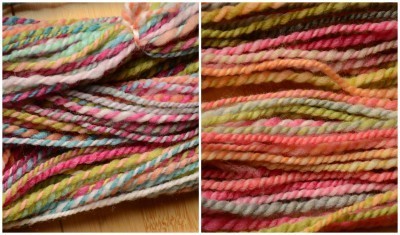
2-ply Gummi Bears, left and Invert, right
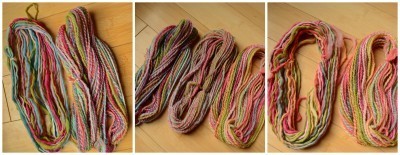
Gummi Bears, left. Gummi Bears, combo draft, Invert, middle. Invert, right. All 2-ply
The finished yarn is lofty and light. All of my finished yarns are woolen spun on worsted preparation. The colors in the yarn stayed as clear as they were in the fiber and blended beautifully in the 2-ply yarns. I had zero extra dye leak when I set the yarn, even with the blue colors.
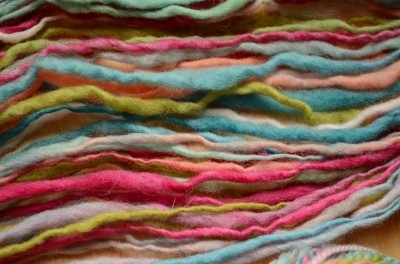
thick and thin Gummi Bears II
This fiber is very much worth the price, the fiber and preparation are exceptional and the dye work lovely and meticulous.
I hope Sasha treats us to other spinning fiber as her business grows! You can keep up with Sasha and Sheepspot through their newsletter.

December 1, 2014
Craftsy’s Cyber Monday Sale!
Craftsy’s sale is still going on! All fiber art classes are $19.99 or less, that includes a whole bunch by Knitty designers.
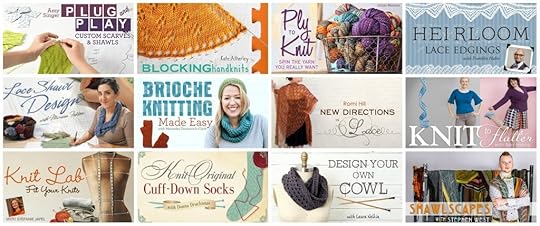
I’ve already added a few new classes to my shopping cart. What will you buy?

November 28, 2014
Craftsy’s Black Friday Sale!
You don’t have to fight crowds, find a parking space or even get out of your jammies for Craftsy’s Black Friday Sale!
All Knitting, Spinning and Weaving classes are $19.99 or less!
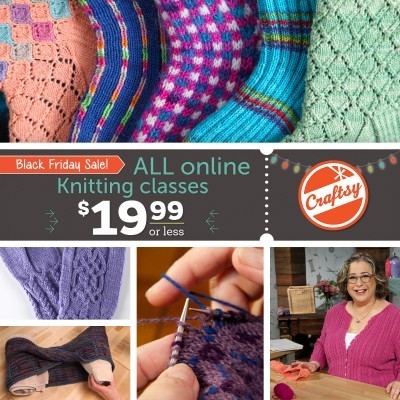
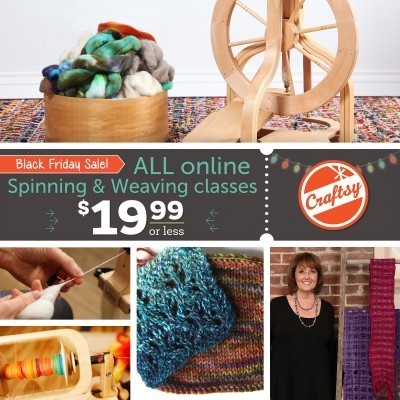

November 26, 2014
WWW: VATMOSS and what it means for knitters
If you’re on Twitter, or if you participate in some of the designer and shopkeeper forums on Ravelry, you might have encountered references to something going on in the EU: VATMOSS.
At first blush it seems like a dull business detail, something of concern only to those in the EU. Sadly, it’s not. The impact is large and broad-reaching.
(Note that I’m not a tax expert; this is designed to be a high-level summary only. I strongly recommend doing more research if you are selling patterns.)
VAT is the European sales tax (effectively).
It used to be that sellers based in Europe would charge VAT according to the rules and regulations for their own country, no matter the location of the purchaser. If a knitter based in the US bought a pattern from a designer in the UK, the designer would charge according to the UK VAT rules. And, most designers wouldn’t even have to worry about VAT, as there is a threshold of £81,000 (approx. USD$127,000). If you sell less than that value of products in a year, then no VAT needs to be collected or reported.
Two changes go into effect January 1st 2015.
1) Sellers will have to charge VAT based on the location of the purchaser.
2) The threshold has been removed for sellers of digital products. (For example, knitting patterns, books and software.)
Here’s what the means: Anyone selling digital products into Europe now has to be able to identify the location of the purchase to charge appropriate VAT on that. A US-based purchaser doesn’t have to pay anything; a purchaser in the UK pays according to UK law; a purchaser in Germany pays according to German law; a purchaser in France pays according to French law, and so forth.
And this applies to sellers outside the EU, too. So even though I’m in Canada I’m still affected by this law. And even if I only sell a single pattern to a knitter in any EU country, I’m still responsible and liable for the VAT collection and payment.
This increases the complexity of selling online enormously: a seller now has to be able to identify where the purchaser is, and has to be up to date with the regulations in the country where the purchaser it based, and has to report and file taxes in all countries they have sold to. And it’s not just an accounting problem: the laws around data storage are onerous.
Designers both in and outside the EU are worried about this. See this flowchart published by UK tax agency HMRC that lays it out, very simply.
But knitters should be worried, too. Since these regulations are complex and costly to implement and manage, many designers feel that their only choice is to stop selling online. If they do keep selling online, you’re likely to see prices go up to reflect that they now have to charge VAT, and to help them cover the overhead of managing these new rules.
Note that online pattern store Patternfish does take care of the tax for you, but not every designer is on Patternfish. As of this morning, Ravelry has announced that they have partnered with UK distributor LoveKnitting to provide a solution for buyers in the EU, and for designers wanting to sell into the EU. (More info on LoveKnitting here.)
This is very helpful, and we’re grateful to both sites for this, but there are still two major limitations:
Designers will have to be reliant on these third-party pattern selling sites, rather than being able to sell directly themselves. For many designers, direct sales – a shopping cart solution on their own website – has been their preferred solution, and this option seems near-impossible under the current rules.
And for those selling something other than patterns – how-to books that don’t have patterns (my upcoming one, for example), and knitting software (StitchMastery, for example) – Ravelry and Patternfish aren’t options.
The fear is that these new rules may kill a lot of small businesses.
For the quick and dirty summary, this post by a self-publishing author is helpful.

November 25, 2014
Jillian’s Spinning: Learning Spinning Online
I have a bunch of things on the bobbins and on my needles, but I can’t show you any of it yet. So let’s talk about one of my favorite topics, learning new stuff.
As you may have surmised I am a big starter, not so good at finishing. Once I figure out the gist of what I want out of a project I’m more or less done. Sure, I limp to the finish line with a project, though not as many as I’d like, but I don’t get a rush out of finishing things.
Part of what I love the most about a new project is that learning phase, something entirely new or just a twist on something I already know. I read a lot of books and take as many classes as I can. My favorite way to learn lately is online. How can you beat taking a class during a 2 am bout of insomnia in your jammies? Or while the rest of the family is watching football on Thanksgiving?
Interweave has the most spinning classes. All are on DVD and most can be downloaded to your computer instantly. The costs range from $14.95 to $31.95 and they have a crazy amount of famous spinning teachers. Bonus, they have already started their Black Friday sale. Here are three that I’ve watched and really liked:

Building Blocks of Spinning, How to Card Wool, Handspinning Rare Wools
Building Blocks of Spinning with Sarah Anderson is a great overview video, it’s like spinning along with her book, A Spinner’s Book of Yarn.
How to Card Wool: Four Spinners Four Techniques is a short video but lets you watch and learn carding from Carol Rhoades, Maggie Casey, Norman Kennedy and Rita Buchanan.
Handspinning Rare Wools with Deb Robson (who else?) is a jaunt through 38 different breeds of sheep. A little history, a little prep, a little spinning, I could listen to Deb talk about sheep breeds all day.
Craftsy has heard spinners and added a few classes and hopefully will be adding more! Their videos are the highest quality and they are fantastic to work for. Jacey explains it wonderfully in a post on the PLY Blog. They are really fair to their talent money-wise and treat you like a superstar when you’re filming. I hope I get to make more videos with them! Before I was a teacher for them I watched their classes a lot and I still do. They make it easy to learn. Excellent production quality and the ability to ask questions are just two reasons why I keep watching and learning from them.
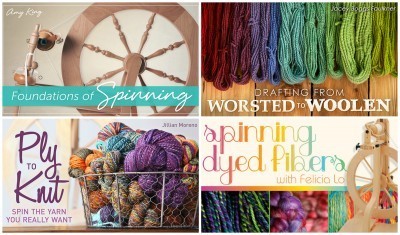
My favorite Craftsy spinning classes
Foundations of Spinning with Amy King is the place to start if you are new or just need a reminder of the whole process of spinning on a wheel, from fiber to finished yarn.
Drafting from Woolen to Worsted with Jacey Boggs-Faulkner is the nest step for some in depth drafting techniques.
Ply to Knit with Jillian Moreno (that’s me!) walks you through plying techniques and what each type of ply mean to your future knitting.
Spinning Dyed Fiber with Felicia Lo lays out tips for spinning with color including variegated tops. This was the second Craftsy class I bought and I still refer to it.
YouTube is my go to spot when I need a quick reminder about a technique or want to learn something very specific. There are a ton of spinning videos, I searched ‘spinning fiber’ and got back 35,000 hits. Some videos are better than others, it’s to each spinner to decide who and what works for them. When I’m working on my art yarn, I really like Jazzturtle’s videos, quick and straight forward.
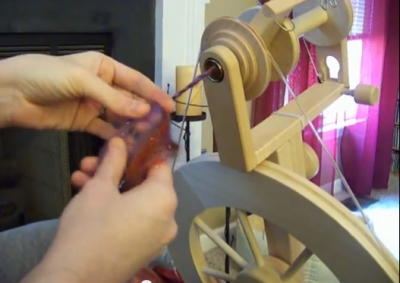
Jazzturtle!
If you are in the US I hope you have a wonderful and restful Thanksgiving with extra spinning time!

November 24, 2014
Epic Yarnbomb: The Tim Horton’s Truck
I mentioned last week about the launch of Canadian coffee chain Tim Horton’s new knitting-themed cups for the winter and holiday season.
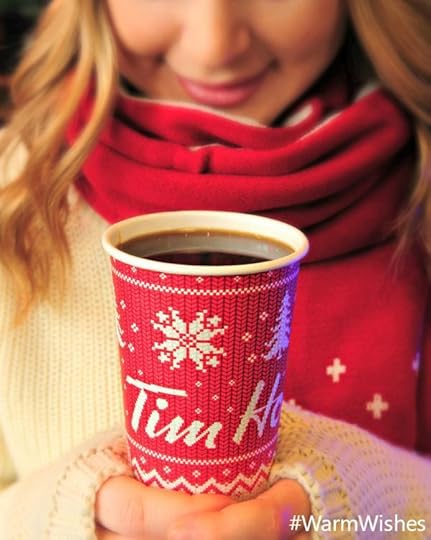
Very knitterly.
It turns out there was a bigger knitting connection than you might have suspected…
Tim’s runs ‘coffee-runner’ trucks, that drive around sampling and selling their much-loved coffee. They’re seen regularly at all sorts of places and community events, distributing warmth and cheer. And the gang at Toronto yarn shop Lettuce Knit got involved, to yarn bomb one of trucks!
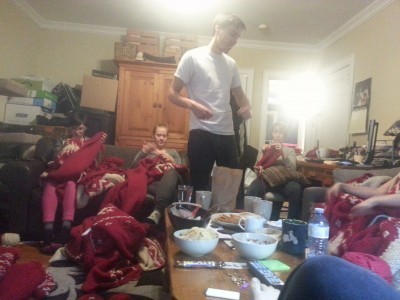
Covert knitting party.
30 knitters spent over 1000 hours at the needles, between October 27th and November 16th. They used 412 skeins of Cascade Eco wool, triple-stranded on 12mm needles.
The project was managed by knitter and ex-Lettuce Knit manager Brenna MacDonald and her computer scientist and knitter boyfriend Matt Kosichek.
The team signed an NDA with Tim Horton’s, and I doubt the CIA could have run a better secret yarn-bombing campaign. Very few of the knitters working on the project knew what it was all about. The panels were divided up so no one knitter had the identifying parts of the design. Key elements were worked in secret, and Brenna and Matt spent a lot of time denying their involvement in anything. Fun!
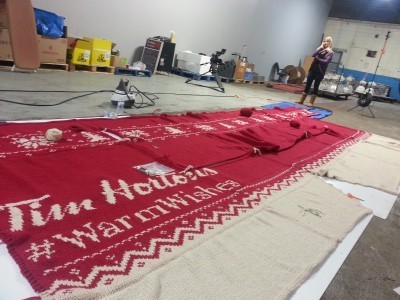
The panels before being put on the truck.
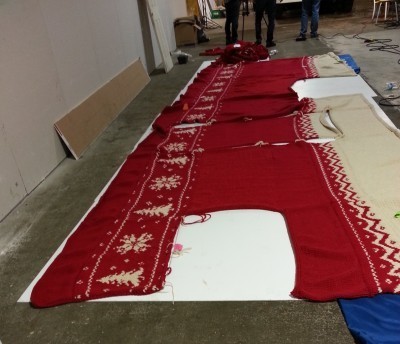
More panels.
This time-lapse video of the truck being wrapped up is terrific.
http://knittyblog.com/wp-content/uploads/2014/11/TimeLapse-Side.mp4

November 19, 2014
WWW: Staying warm and cozy.
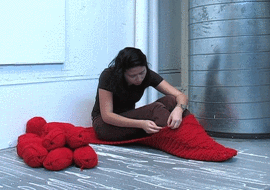
Fun!
Now that the weather has taken a turn for the wintery up here in the northern parts of the US and across Canada, enclosing yourself in a yarny cocoon doesn’t seem like such a silly idea. Fiber artst Bea Camacho shows us how, in an installation at the Institute of Contemporary Art in Boston.
Speaking of keeping yourself warm… (a little bit saucy!) (male) Bosnian farmers apparently like to knit themselves cozies for a certain part of their anatomy. Slightly NSFW.
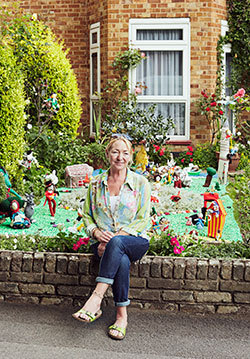
Knitter Suzanne Haggerty and some of her creations.
Love this: a knitter knits her mum’s front garden.
Fun: online t-shirt shop TeeFury has designed a line of sweatshirts with prints inspired by the idea of the “ugly Christmas sweater”. I’m always tickled by printed Fair Isle designs.

Cute!
Speaking of printed Fair Isle designs… Although I’m not the biggest fan of their coffee, I do love the new knitting-themed cup design that Canadian coffee institution Tim Horton’s has rolled out for this winter. (There’s an associated campaign to donate hats to children in need, FYI.)

The next big thing in mobile gaming?
Well, there’s the rest of the week gone. A new knitting-themed game for iPhone and iPad launches soon: Knituma. Help a bear knit a long scarf. Something about getting the balls of yarn in the basket, and keeping the cats away. Yup, sounds entirely familiar!
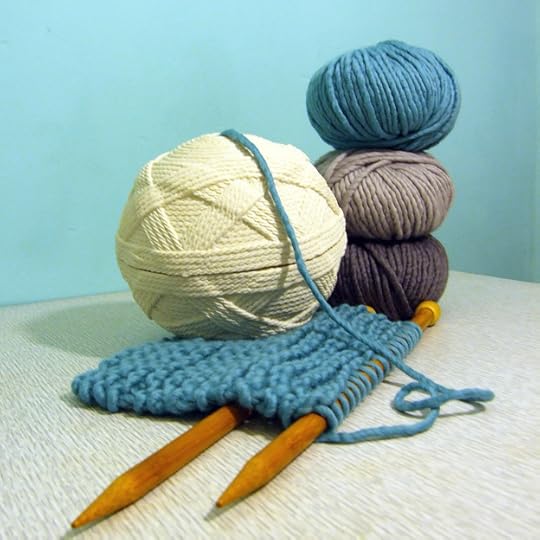
Gorgeous!
Speaking of keeping the cats away from your yarn, these wonderful yarn-inspired yarn bowls might help… The result of a collaboration between May Linn Bang, the owner of UK yarn shop Knit With Attitude, and ceramic artist (and knitter) Annette Bugansky, they are both beautiful and clever.

November 18, 2014
Jillian’s Spinning: Fat Fulled Yarn
This past weekend I went to a yarn store with a group of knitting friends. It’s what you do when there’s a break in the Cute British Guys and Costumes movie marathon you’re knitting and spinning along with, right?
Just like every winter I fell in love with Malabrigo Rasta, a super bulky (4-5 WPI) merino single. I know you’ve seen it and pet it.

Malabrigo Rasta
Usually I convince myself to buy some, even though the spinner in me is gnashing her teeth and stomping her foot, becasue lazy and because it’s right in my hand with it’s squishy goodness. But this year the spinner in me won.
I went home and dug out some gorgeous Merino.
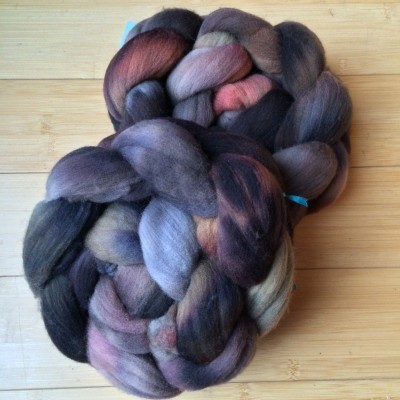
Merino from Fiber Story, colorway Singed.
I set up my Lendrum with the slow, huge plying head. I poked at piece of Rasta before I spun. It’s 4-5 WPI and a fulled singles. I thought about how I might change it. I wouldn’t mind if it wasn’t quite so fat; I’d like to add some more thick and thinness to it – not in a specific pattern, but random. Rasta is pretty dense 90 yards in 5 ounces, I might like it a little loftier, but still fulled.
I spun for an evening, just sampling not stressing. I fluffed and attenuated the fiber just barely to be able to draft quickly. I spun with the yarn sample in my lap checking it against my singles and I got a variety of yarns.
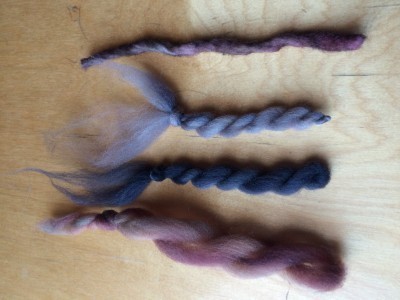
A few samples
The top yarn is a snip of Rasta. The bottom is my first free-style big and airy yarn – too big and too airy. I use ply back samples even when I spin singles. I do lose some twist in the ply back, but I have most of the twist contained and it’s easy. The dark sample in the middle is the right WPI with a little more density and the light sample is the right WPI with even more density, the closest to Rasta.
To get more density (weight, heft) to my yarn I add more fiber per drafting pinch. To get the same WPI in the denser sample as the loftier sample I added more twist.
I spun a small amount of the two samples and looked them over and thought about the fulling process. The loftier sample would shrink in size when fulled maybe even to a worsted weight yarn. I was betting on the denser singles to full to chunky/bulky size.
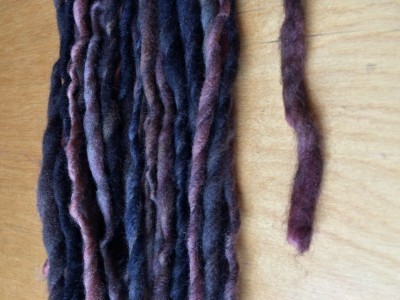
Homemade Rasta, left and commercial Rasta, right.
My yarn is not quite as chubby as Rasta , it’s 5-6 WPI, but it’s every bit as squishy and soft. Now I need to spin the rest and knit! What should I make?

November 13, 2014
Obsessed with: Moth Traps
Tineola bisselliella. Clothing moths: the scourge of the fiber crafter.
Traditional moth solutions are either horribly toxic or not all that effective. (Moth balls – bad bad bad.) (Cedar, eucalyptus, weird scented soaps – they might discourage moths taking up residence, but if they’ve already moved in, they’re not going to help all that much.)
These, on the other hand, actually help.
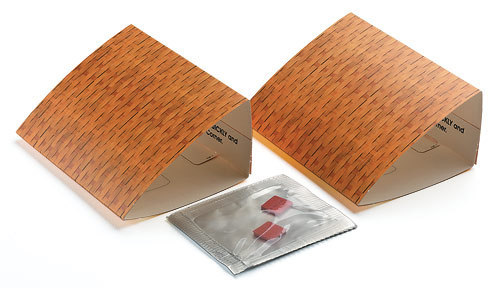
Image borrowed from the Lee Valley Hardware site – these are their version. Others look similar.
Sticky moth traps. They use pheromones to attract the moths. They are totally without scent, and child and pet-safe. (Although they are very very sticky. I managed to get one stuck to the carpet once.)
In Canada, you can get them from Lee Valley Hardware. In the US, the ‘Safer’ brand is readily available. They need replacing every three months or so, but they’re inexpensive, very easy to use, very safe and very effective.

November 12, 2014
WWW: Penguins, Recursion, Upcoming Books from Knitty People
“Knitting a recursive sweater”. This makes my nerdy heart beat a bit faster: the outline of a computer science paper, brought to our attention by the Improbable Research Blog.
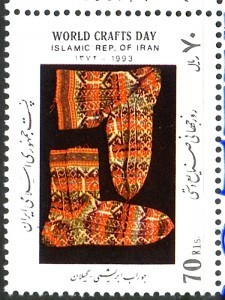
Iranian postage stamp; image courtesy Donna Druchunas.
Knitty columnnist and historian Donna Druchunas has announced volume four of her Stories in Stitches book series. This upcoming volume, “Sacred Stitches”, will look at spiritual and sacred knitting traditions from around the world. As with the previous three volumes, the book contains factual articles, personal essays, and seven beautiful and historically inspired projects.
Preorders are available now, and the book will be ready for download/shipping November 14th.
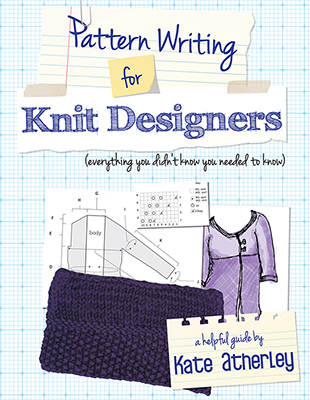
Helpful.
Speaking of announcements, Knitty lead Tech Editor Kate (that’s me!  ) has announced her upcoming book, Pattern Writing for Knit Designers. More info here. It will be available as an e-book in early December – sign up for the mailing list to receive notification of availability.
) has announced her upcoming book, Pattern Writing for Knit Designers. More info here. It will be available as an e-book in early December – sign up for the mailing list to receive notification of availability.
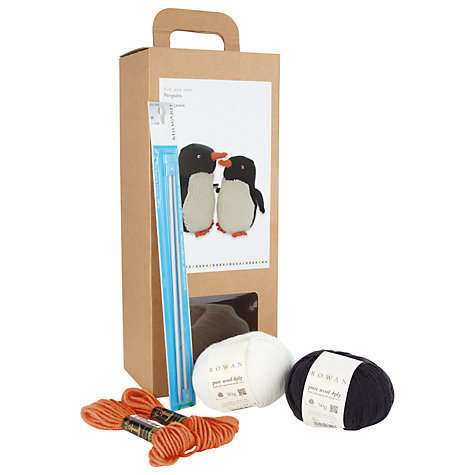
Love it! I’ve been very good this year… hint, hint.
Have you watched UK department store John Lewis’s 2014 Christmas ‘advert’ yet? It’s a lovely story of a boy and his penguin friend. And, to make it even better, knit designer Jem Weston was commissioned by the store to design a knit-your-own penguin kit to go along with it. Buy the kit here.
An update on marathon knitter David Babcock: he ran a new personal best time in the recent New York City Marathon, even though the knitting conditions weren’t ideal….
Very touching: a story about notes of comfort and support, delivered with hand-knit socks. Many of those left at home supported the ‘war effort’ during the First World War by knitting socks for the troops; and many of the socks were sent to the troops with hand-written notes of support tucked inside. The State Library of New South Wales in Australia is hosting an exhibition of some of these notes.

Mandy Moore's Blog
- Mandy Moore's profile
- 6 followers



